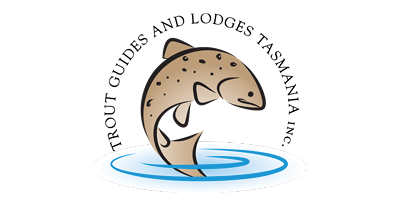
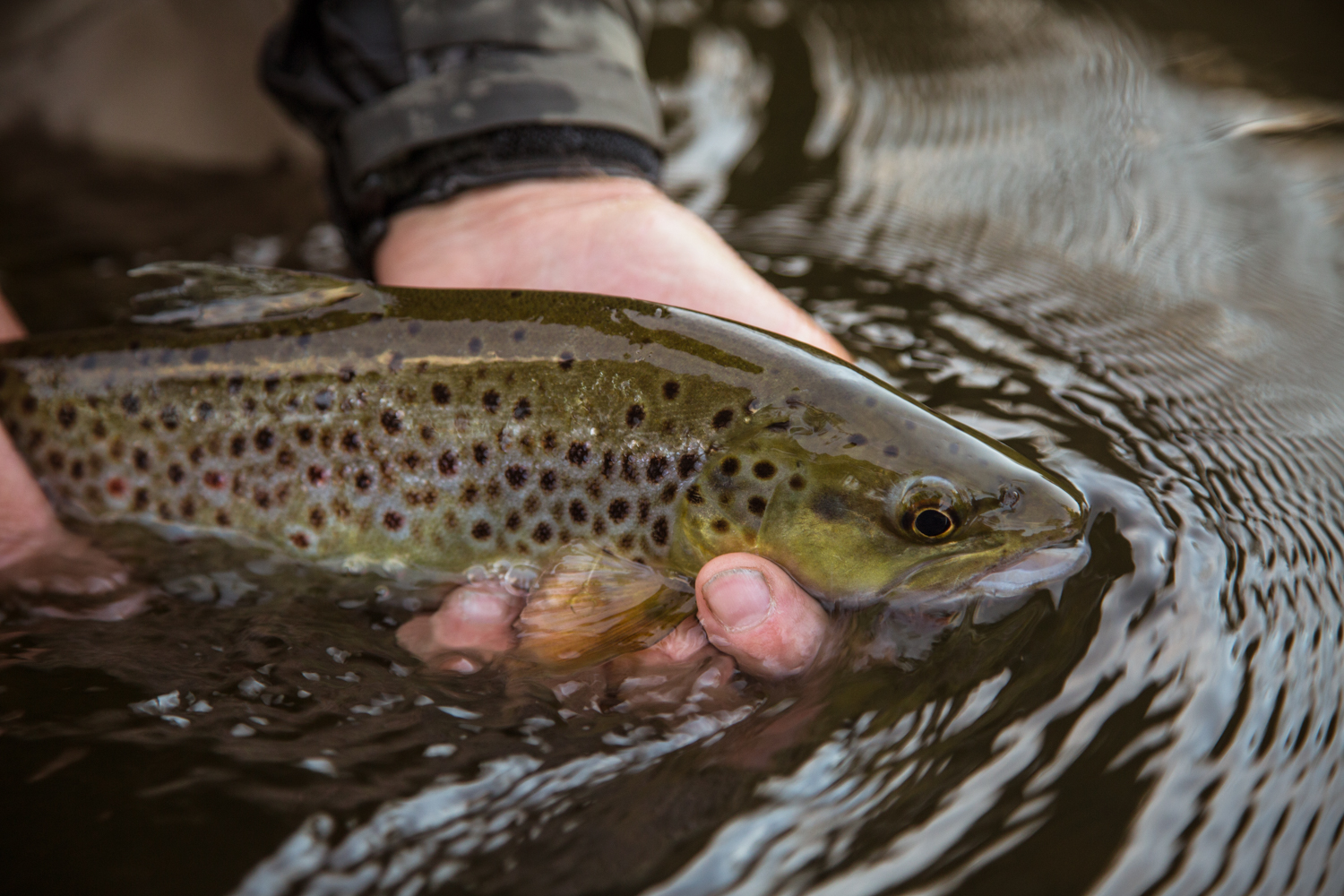











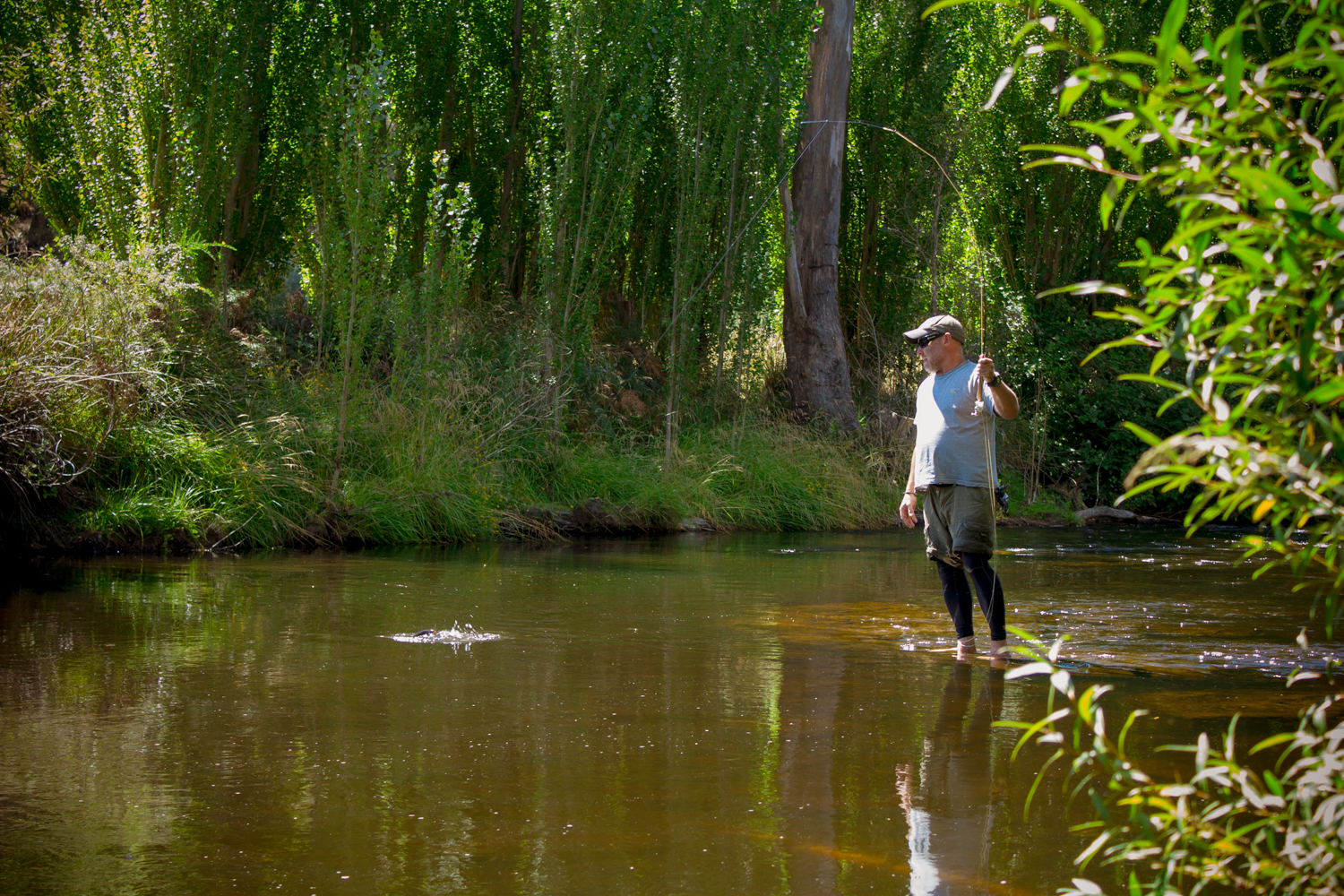
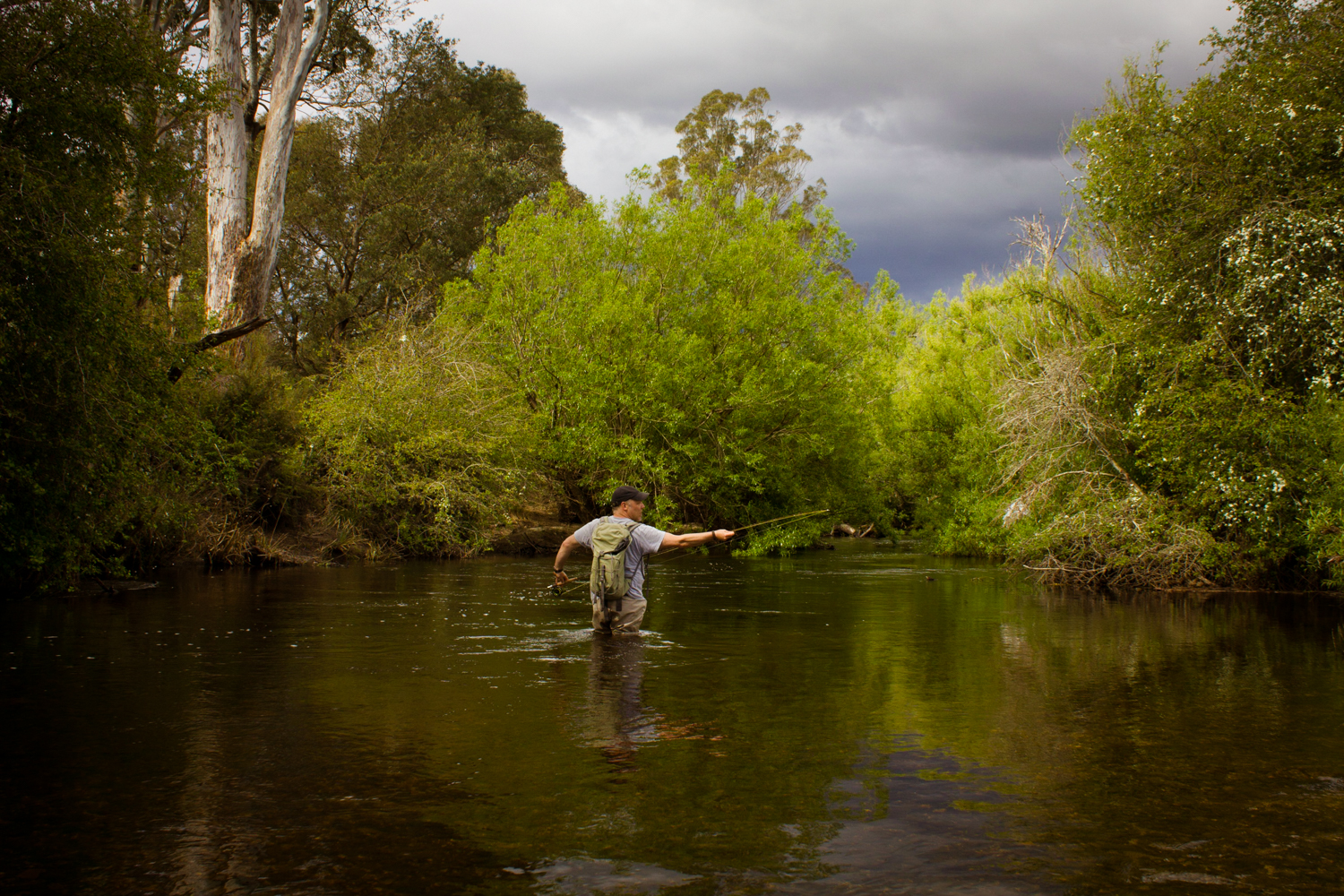
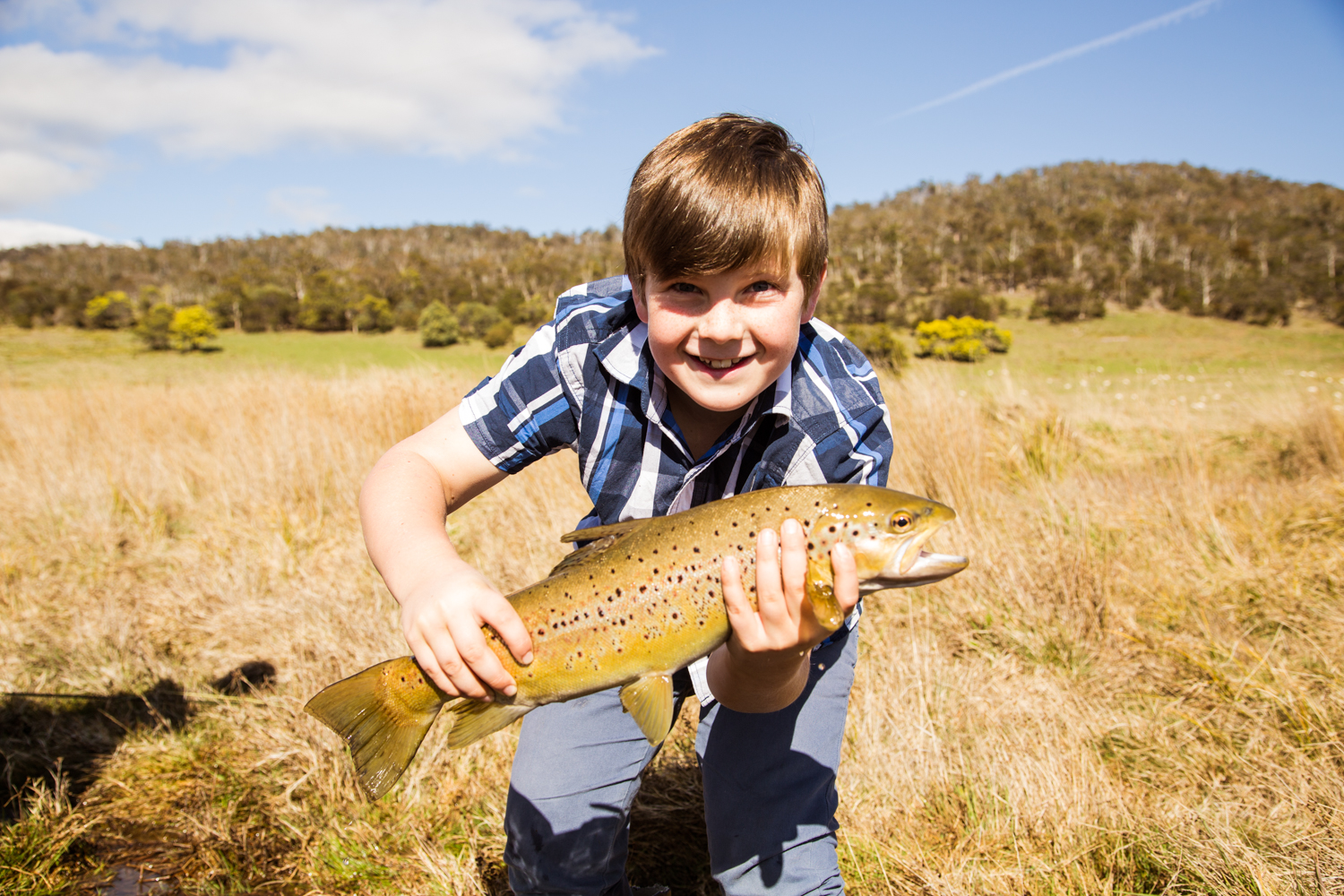








TASMANIA – THE ANGLERS’ PARADISE
In 68 km² there's over 3,000 fishable lakes and rivers, not a bad ratio for a tiny little island at the end of the world. Tasmania is home to some of the best fly-fishing on the planet—we truly are spoilt for choice! Here are a few of my favourites…
PENSTOCK LAGOON
Penstock is an intimate fly-only water nestled amongst tree-lined banks in the central highlands of Tasmania. As far as lakes go, it’s more of a penny than a pound, this only seems to concentrate its quantity of bugs, fish and beauty. A dun hatch on Penstock can last for, what seems, an eternity, and casting to feisty rainbows sipping down Mayflies as they drift like tiny sailboats is nothing short of bliss.
Penstock doesn’t give up fish easily, she’s a fickle mistress. That being said spend some time on her banks, get to know her and I promise you’ll fall for her as quick as I did. It’s odd to refer to a lagoon as a person, in this case, I’ll make an exception, given that one small bay is called The lady’s walk it seems appropriate. A word of warning though, when the Mayflies are up, you will never want to leave.
BRONTE LAGOON
The grassy shores of Bronte are home to some of the best tailer fishing in Tasmania. When you rise to a dawn patrol and luck upon the fish in amongst the shallows, it’s simply unbelievable. At any given point you can be staring at a dozen foraging trout, heads down and fins carelessly breaking the water’s surface – all within a five-metre radius. If you see the slightest disturbance on the water, make a cast, it’s more than likely a fish.
Bronte’s shores swell with Spring rain early in the season and flood fishing can be extremely productive. An infinite supply of earthworms is flushed out of the ground and become tasty morsels for hungry trout looking to gain weight after a long and cold winter. Putting up with the schizophrenic weather patterns makes it all the worthwhile when you grass a brownie bulging with terrestrial treats.
Oh, and the dry fly fishing, let’s just say it’s superb!
“Tasmania is home to some of the best fly-fishing on the planet…”
LONDON LAKES
The term champagne fly fishing must have been first spoken at London Lakes. Lake Big Jim and Samuel are the Dom Perignon and Cristal of fly fishing waters in Tasmania, if not Australia. The mayfly hatches are second to none, just ask Greg Beecroft, once you’ve lucked upon a swarm of these mini-beasts taking to the wing your heart will explode through your chest and you will never be the same again.
Some may say “it doesn’t count, it’s a private water, you’ll only catch stockies” Nah I say! it’s a self-sustaining population of brownies and bo’s that suffer very little fishing pressure and grow fatter yearly from a majority catch and release program maintained by the guides. The added bonus of spending a day on either of these magnificent lakes is the peace and quiet, there’s never a lot of people and wildlife everywhere. Simply put, this is highland heaven!
SOUTH ESK RIVER
If the St Pats were your first kiss then the South Esk River will be your first love. The South Esk begins at Mathinna and wonders her way through the grassy plains of the northeastern quarter of Tasmania, eventually meeting the sea at Launceston. This river is pure romance, she’s elegant, challenging and most of all beautiful. You have to treat her exactly as she expects to be treated.
She has many faces, from old-English broad waters, intimate willow-lined runs, to high hopper-banks to die for! One look and you’ll fall in love, one cast and you’ll be hooked, one day and she’ll break your heart. You will, however, like a love-struck teenager, never tire of her attractions.
NORTH ESK RIVER
We spent many nights under the shadow of Ben Lomond casting flies to sparkling mountain trout. Those were the early days, our flies were too big, our casts too short and our bags empty. I fished with a broken rod for the first season, held together by gaffer tape at the ferrule. Paul's holy waders would fill up with water as we both stood puzzled by these rising fish and perplexed why we couldn't catch them. We've learnt a lot since those days, one thing that hasn't changed though is our enthusiasm for fly fishing.
The North Esk is a challenging river, we often talk about the early days and how landing a fish there was worth three anywhere else. It falls from the mountains winding its way through bushland and pristine farming country. With some of the most picturesque runs and glides to be found anywhere in Tasmania. In places, the North Esk is a true meadow stream and it holds some seriously large trout for its size. A four-pound brown taken on a size 18 nymph is not an uncommon occurrence and when you have one safely in the net a high-five is the only way to celebrate.
ST PATRICKS RIVER
The St Patricks River or the St Pats as it’s known locally is a sparkling mountain-fed stream. It’s a special place for us, it’s the river where we first learnt to cast a fly, and over many seasons of practice, frustration and delight, the charm of fly-fishing took hold. Its headwaters flow down through an area called “The Camden”, a plateau set under the climbing peaks of Mt Barrow in the North East of Tasmania and as you would suspect we named our business after this beautiful place.
It’s a stream that we love and often return to, it’s mystique matched only by its beauty. There is never a day on the St Pats that is easy fishing, its tight turns and bubbling runs keep you guessing, and just when you think you’ve figured it out, it changes again. This is its greatest appeal, and sometimes frustration, a stream that seems to evolve over time along with your fishing ability.
TYENNA RIVER
A summers day spent flicking a dry on the Tyenna is like no other, the water sparkles under the southern sun. We often talk about the light in Tasmania, its unique colour and the way it glows in the evening. In the Summer months that light smothers the hills of Westerway and surrounds, transforming the water into caramel and making the trout glow like speckled gold ingots.
The Tyenna is nothing short of addictive and once you’ve had a taste you’ll never want to give it up. Fishing a Caddis hatch on dusk is as close to heaven as it gets. It’s a river best described as unexpected, there’s fish where there shouldn’t be, no fish where there should be and the places you’re least likely to cast are exactly the places you should. Time spent on the Tyenna is always time well spent.
MACQUARIE RIVER
The Macquarie, the grand old dame of Tasmanian rivers. This majestic waterway encapsulates all that is required for first-class fly fishing. Plentiful amounts of cold water, above average size fish and views that belong on postcards. This being said she does not give up her fish easily, you’ll have to work hard here, harder than most in fact but hell it’s worth it. This river was beloved by the legendary David Scholes and is just as tantalising as his sparkling words describe.
Marcus
#TheSeasonNeverEnds





